Celebrating LGBTQ+ Inventors and Entrepreneurs
Joint blog by the U.S. Patent and Trademark Office (USPTO) and the Economic Development Administration (EDA)
This month, the U.S. Department of Commerce is celebrating the LGBTQ+ community and paying tribute to the many LGBTQ+ entrepreneurs and innovators who help fulfill the promise of America for all. Below we share the stories of a few leaders in the community and ways in which our agencies are advancing inclusive innovation for the betterment of society.
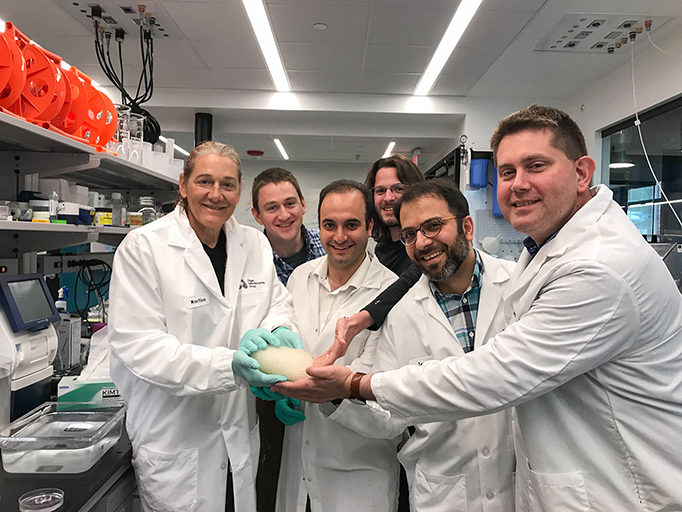
Dr. Martine Rothblatt is an entrepreneur, innovator, lawyer, author, movie producer, and social activist. Faced with daunting challenges throughout her life, Rothblatt learned to push past the idea of the insurmountable. Her long list of accomplishments includes creating and commercializing satellite radio, founding a biotechnology company that seeks to provide an unlimited supply of transplantable organs, setting world records for electric flight, becoming a leading advocate for transgender rights, and delving deep into the future of artificial intelligence (AI) with her work on digital immortality. Rothblatt holds over 80 patents. Learn more in “Persistence is omnipotent,” the USPTO’s Journeys of Innovation story about Rothblatt.
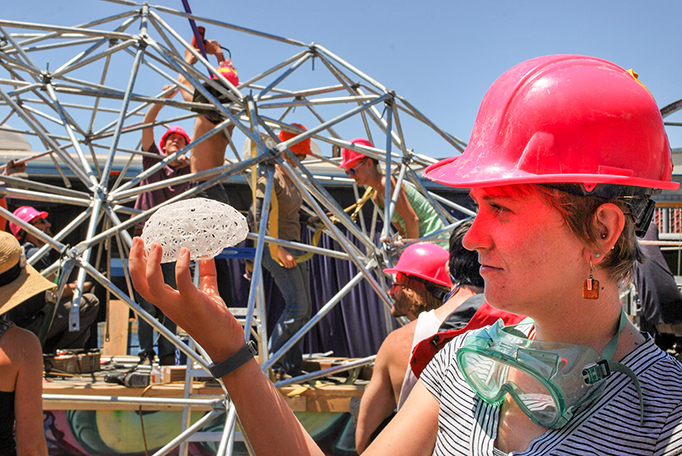
Scientist Natalia Bilenko develops AI tools that are transparent and usable for anyone. An accomplished inventor, she was named on five patents by age 37. At medical device company Caption Health, she works on employing AI to make ultrasound scanners easier to use. The company’s cutting-edge AI-guided scanner was named one of the “100 Best Inventions of 2021” by Time Magazine. The technology is designed to catch heart problems early and could be particularly helpful for people who live in rural areas far away from experienced cardiologists and ultrasound technicians. Bilenko, whose interests extend to the intersection of AI and art, co-created the world's first interactive exhibit to use real-time brain activity, called Cognitive Technologies, for the San Francisco Exploratorium. As a visible role model in the AI community and an organizer of Queer in AI, Bilenko works to ensure the field welcomes ideas and perspectives from all scientists. Learn more in the USPTO’s Journeys of Innovation story on Bilenko, “Artificial intelligence for all.”
The Department of Commerce not only celebrates these entrepreneurs, but also works to support others like them. The USPTO holds a number of events that help advance equity in innovation, including this month’s popular Proud in Innovation series, and has launched new resources such as our inclusive innovation page. These programs and events inspire and encourage inventors and entrepreneurs from all backgrounds to develop their ideas and seek intellectual property protection for them to help enact real change and improve our world.
Working with Thrive West Central, the EDA recently capitalized a Revolving Loan Fund (RLF) that will provide critical gap financing to LGBTQ+ and other minority-owned small businesses. Among its initiatives, the Intentional Outreach Network undertakes dedicated outreach to the LGBTQ+ community to empower, guide, promote, enhance, connect, and grow LGBTQ+ business leaders and entrepreneurs. Prospective borrowers from underserved populations — including the LGBTQ+ community — or those that commit to employing individuals from these communities, will be prioritized for loans.
Expanding opportunity and creating an economy that works for all Americans is central to the Department of Commerce’s mission and strategic plan. The Economic and Development Administration and the U.S. Patent and Trademark Office are proud to join all Commerce bureaus in celebrating the LGBTQ+ community and recognizing their significant contributions to our nation’s economy, competitiveness, and growth.
Please visit USPTO’s inventor and entrepreneur resources page to learn more about protecting intellectual property. Additional information about EDA’s Revolving Loan Fund (RLF) program is available at its website.
Posted at 04:44AM Jun 27, 2022 in USPTO | Comments[1]
PTAB Pro Bono Program: Helping inventors obtain legal counsel for PTAB proceedings
Blog by Kathi Vidal, Under Secretary of Commerce for Intellectual Property and Director of the USPTO
As Director of America’s innovation agency, I am committed to ensuring that our intellectual property system remains the dynamic engine of economic growth and national prosperity the framers of our Constitution envisioned. We fully recognize that navigating the patent system can be difficult at times, including proceedings before the Patent Trial and Appeal Board (PTAB). Which is why I’m pleased to announce that we are now accepting applications from qualified inventors for free legal assistance in ex parte appeal proceedings through the PTAB Pro Bono Program.
The very definition of pro bono is “for the public good,” and the success of any pro bono program depends on volunteers with a strong, principled commitment to helping others. If you have ex parte appeal experience before the PTAB and a willingness to “pay it forward” by sharing that experience, the PTAB Bar Association could use your help. To get involved, you simply need to complete a short volunteer application.
As we noted in our previous announcement about the program, the PTAB Bar Association serves as the national clearinghouse for the PTAB Pro Bono Program. Initially, they will work to match a limited number of qualified inventors seeking ex parte appeal assistance with volunteer practitioners. In the future, we plan to expand the program to match inventors seeking America Invents Act (AIA) trial assistance with volunteer practitioners.
To be eligible for pro bono assistance, independent inventors must meet certain requirements. In general, they must demonstrate that they:
1. live in the United States;
2. have a gross household income less than three times the federal poverty guidelines;
3. established micro entity status in the application subject to appeal;
4. applied within one month from the date of the Office Action in which claims have been twice or finally rejected; and
5. viewed the required training about the PTAB Pro Bono Program and the ex parte appeal process.
If you are an inventor and meet these requirements, you can apply for pro bono assistance by completing our brief inventor application. The availability of pro bono representation depends on a number of factors, including the availability of volunteer practitioners to handle pro bono matters, so we ask for your patience as we get this program off the ground and fully active in service of our nation’s innovation community.
We are excited to work with the PTAB Bar Association to increase the availability of free legal assistance to inventors. Check out the PTAB Pro Bono Program webpage for more information. Your feedback about the program is important, and we welcome any comments or suggestions to ptabprobono@uspto.gov. I'll also be talking more about the PTAB Pro Bono Program at an upcoming PTAB Boardside Chat webinar, this Thursday, June 9 from noon to 1 p.m. ET.
Additionally, we appreciate your help spreading the word about this new program to help inventors obtain legal counsel for PTAB proceedings. We encourage you to share this program far and wide – we are invested in its success to bring more innovation to impact for all those with dreams of innovation. It’s our job to help make those dreams a reality.
Posted at 07:27AM Jun 07, 2022 in USPTO | Comments[1]
Incentivizing and protecting innovation in artificial intelligence and emerging technologies
AI and Emerging Technologies Partnership: Join upcoming discussions on maximizing innovation’s widespread impact
Blog by Kathi Vidal, Under Secretary of Commerce for Intellectual Property and Director of the USPTO

In recent years, we have actively engaged with our stakeholders on AI and ET, and have had the chance to discuss the importance of intellectual property (IP) rights as an incentive to foster innovation in these critical areas. We have published several reports on AI, gathered feedback through requests for comments, and held several events focused on AI and ET. Our work aligns with and supports the mission of the National AI Initiative to ensure continued U.S. leadership in AI research and development, and addresses some of the recommendations from the Final National Security Commission on Artificial Intelligence (NSCAI) Report to Congress.
To build on these efforts, the USPTO is forming a partnership (AI/ET Partnership) with the AI and ET communities, including, for example, academia, independent inventors, small businesses, industry, other government agencies, nonprofits, and civil society. The AI/ET Partnership will provide an opportunity to bring these stakeholders together to share perspectives, experiences, and insights, and foster opportunities to collaborate on the intersection of intellectual property and AI and ET. Through our AI/ET Partnership, we will continue to gather useful input from the AI and ET innovation communities.
That is why, as we recently announced in our Federal Register notice, we will be holding an upcoming series of AI/ET Partnership stakeholder meetings. These public meetings will highlight our AI and ET-related initiatives and will explore various IP policy issues impacted by AI and ET. These meetings will also include discussions on how AI and ET are being leveraged within the USPTO to serve our stakeholders, while fostering public trust by promoting trustworthy and responsible use of these technologies.
In the inaugural meeting on June 29, we will have panel discussions on important patent policy issues such as subject matter eligibility, disclosure requirements of AI inventions, and the implications of AI’s increasing role in the inventive process in some fields. We will also discuss the effectiveness of current patent laws and USPTO guidelines that incentivize innovation and investment, and ways in which the patent system could evolve to encourage and protect AI and ET inventions. Speakers will explore data from patent filings and how they inform innovation trends in these critical technology areas.
The purpose of these meetings is to hear from the innovation community and to promote greater awareness, openness, and inclusivity on our ongoing and future AI and ET efforts. Our takeaways will shape our future work on AI and ET policy and will inform the broader U.S. government’s approach to AI and ET.
Whether you are an independent inventor, small business, or in academia, industry, federal agency, or at a nonprofit, we want to hear your views. We hope you can join us at an upcoming AI/ET Partnership meeting or watch the recordings, which will be available on our AI/ET Partnership webpage. We welcome your feedback at any time and encourage you to email any questions or ideas of topics for discussion at future meetings to aipartnership@uspto.gov.
Posted at 06:04AM Jun 06, 2022 in USPTO | Comments[4]
Doing our part to mitigate climate change: fast-tracking green innovations
Blog by Kathi Vidal, Under Secretary of Commerce for Intellectual Property and Director of the USPTO

Inventors and entrepreneurs are answering the call to address the climate crisis. Our patent technology center that focuses on new innovations aimed at reducing greenhouse gas emissions technologies last year received 40,000 patent applications, down slightly from the previous year, likely due to the pandemic, but still comprising almost 7% of yearly patent applications across all fields of technology.
It’s essential to protect these transformative energy innovations with intellectual property (IP). Innovation is a primary driver of the U.S. economy, and IP is the bridge between an idea and bringing that innovation to market. As we stated in on our recent IP and the U.S. economy report, industries based on innovation and the protection of intellectual property generate almost $8 trillion ($7.8 trillion) in GDP, and account for 44% of all U.S. jobs. Workers in patent-intensive industries earn almost $1,900 per week. That is 97% higher than the average weekly wage of workers in non-IP intensive industries.
We also know that startup companies that have a patent are far more likely to be successful in raising funding than those that have not secured intellectual property protection. Consider the following:
• When used as collateral, a patent increases venture capital funding by 76% over three years, and increases funding from an initial public offering by 128%.
• The approval of a startup’s first patent application increases its employee growth by 36% over the next five years.
• After five years, a new company with a patent increase its sales by a cumulative 80% more than companies that do not have a patent. 1
At the USPTO, we are committed to encouraging and incentivizing innovation in clean and green energy technologies to combat the climate crisis. Recently, I had the chance to discuss this topic with Dr. Suresh Sunderrajan, Associate Laboratory Director for Advanced Energy Technologies at Argonne National Laboratory, at the Department of Energy’s Advanced Research Projects Agency-Energy (ARPA-E) Innovation Summit. During our discussion, Dr. Sunderrajan and I reinforced the goal for all of us to work together – from government, to academia, to the private sector – to advance clean energy innovations and bring these transformative technologies to the market. The protection of intellectual property plays a key role in that process.
That is why I am pleased that we just announced our Climate Change Mitigation Pilot Program, a brand new program which will fast track the examination of certain patent applications for innovations that reduce greenhouse gas emissions. Applications involving technologies that mitigate climate change will be advanced out of turn (granted special status) until first action on the merits by a patent examiner, if the applications meet all program conditions. To participate, an applicant must complete a petition form with the USPTO and upload it in Patent Center. Learn more about what applications qualify for the program and how to apply on the Climate Change Mitigation Pilot Program page of the USPTO website.
During the coming year, we will accept up to 1,000 qualifying applications into this pilot program without requiring applicants to pay the petition fees or satisfy the typical requirements of the existing accelerated examination program (e.g., the requirement for an examination support document).
The human, financial, and ecological toll of climate disasters is significant and growing. This new program is just one way in which we are working to incentivize and expedite clean energy technologies that will help reduce greenhouse gas emissions and mitigating the effects of climate change. We welcome your thoughts on this program and encourage you to submit comments on our federal register notice. Contact us at PatentsClimateChangePilot@uspto.gov with any feedback or questions.
12016 National Bureau of Economic Research Working Paper No. w21959, “The Bright Side of Patents,” and 2019 update to the study “What is a Patent Worth? Evidence from the U.S. Patent ‘Lottery’, Journal of Finance, USPTO Economic Working Paper 2015-5
Posted at 09:44AM Jun 03, 2022 in USPTO | Comments[1]
Protecting design innovations in new and emerging technologies
Blog by Kathi Vidal, Under Secretary of Commerce for Intellectual Property and Director of the USPTO
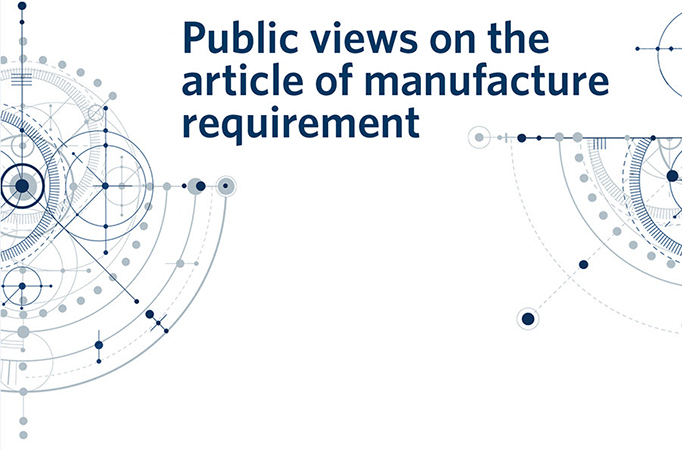
As with other intellectual property rights, design patents play a critical role in our economy, stimulating job creation and economic prosperity. Maintaining our ability to protect designs effectively is critical to our efforts to revitalize America’s domestic manufacturing and secure our supply chains. According to a National Endowment for the Arts study in 2017, design patent protection provides a “catalyst for growth for small and medium-sized manufacturers” and “a competitive edge for U.S. manufacturing success in the global economy.” According to the study, success of small and medium-sized manufacturers (SMMs) (those employing fewer than 500 people) “is key to the U.S. manufacturing sector as SMMs create 56% of all new manufacturing jobs, comprise 98% of manufacturing firms and complete 60% of the process of taking goods from raw material to consumer product.” Indeed, since “up to 95% of production costs occur at the design stage,” good designs can lower cost. They can make products better, more usable, more environmentally sustainable, and create a personal connection between the product and the consumer.
Good designs promote competition by allowing SMMs to compete in the market even though they have limitations larger firms do not. They can often be a “major differentiator in ensuring product success in a global market.”
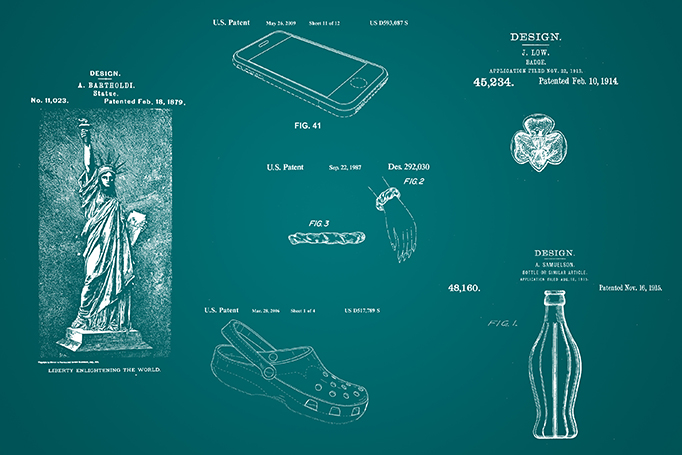 Examples of U.S design patents through the years
Examples of U.S design patents through the years
The value of designs is underscored by “the level of S&P 500 companies building large design functions” and by the rise in the number of design patent applications filed at the USPTO. Over the 10-year period from 2009 to 2019, our USPTO data shows that filings of utility patent applications increased by 36% whereas filings of design patent applications increased by 82%.
As to whether the USPTO’s guidelines are effectively incentivizing and protecting innovative designs within the laws as set forth by Congress and as interpreted by the courts, several commenters expressed that the guidelines are too restrictive and that modifications to the guidelines are permissible under the law and could allow the USPTO to better protect designs in new and emerging technologies. Some commenters called for harmonization, noting that other jurisdictions are moving toward broader protection in these newer technologies. Other commenters set forth reasons why some of these newer technologies should not be eligible for patenting and cited cases that may be limiting. One commenter made a policy argument that certain protections would not incentivize innovation but would instead stifle it. Other commenters addressed concerns about the lack of prior art for inventions not previously patentable, noted that copyright and trademark law also protect certain designs, and expressed First Amendment concerns. The commenters also addressed whether eligibility for patent protection should depend on (1) the degree to which users interact with the design or (2) the integrality of the design to the operations of the device.
In view of the importance of this issue, the USPTO will immediately turn to reviewing the “Guidelines for Examination of Design Patent Applications for Computer-Generated Icons” and the surrounding law. We will also revisit Chapter 1500 of the Manual of Patent Examining Procedure (MPEP) directed to design patents to ensure it is updated with current case law. If you have additional thoughts or comments on design patents, please email IndustrialDesigns@uspto.gov.
Posted at 08:29AM Apr 21, 2022 in USPTO |
USPTO highlights trailblazing women inventors in collectible cards
A blog about the USPTO by the U.S. Department of Commerce.
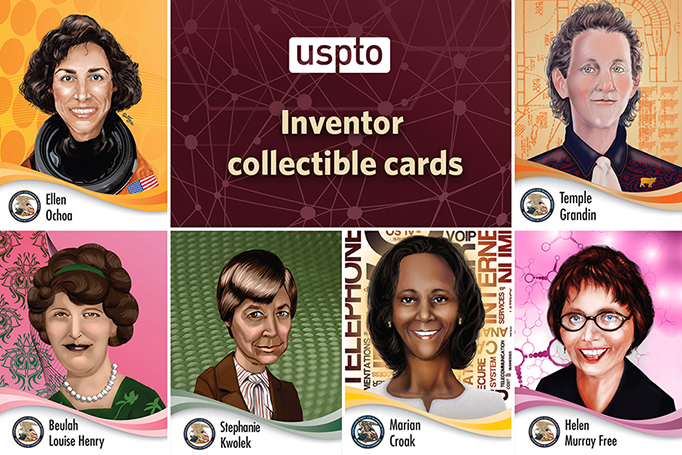
In honor of Women’s History Month, and as part of our efforts to protect and promote the ingenuity of American inventors and entrepreneurs, we are proud to share some inspiring stories of notable women innovators who have made lasting contributions to our nation’s history, economy, and way of life.
We highlight these incredible leaders in many ways, but one of the most popular channels is through our Inventor Collectible Card Series, which is celebrating its 10th anniversary in 2022.
Launched by the USPTO's Office of Education in 2012, the cards feature colorful portraits of various inventors from diverse backgrounds and demographics and were developed to encourage and inspire future generations of innovators from all walks of life. The images are illustrated by USPTO graphic artists, with new cards released and distributed periodically. Popular among students as a “cool collector’s item,” the agency mailed the cards directly to schools and youth-serving organizations in an effort to keep kids connected and inspired during the pandemic.
Here are a few trailblazing women featured in the USPTO collectible card series, and their exceptional accomplishments:
Marian Croak, Ph.D., developed inventions that made phone calls more reliably and securely transmittable over the internet. She is a pioneer in the advancement of Voice over Internet Protocol (VoIP). Dr. Croak is a technology team leader, mentor, and mother of three, who holds over 200 patents. She inspires others through her commitment to innovation, leadership, and service. She will be inducted into the National Inventors Hall of Fame (NIHF) this year.
Helen Murray Free and her husband Alfred Free developed the first dip-and-read test strips for use in diagnostic testing. Their work revolutionized the field of urinalysis and led to many self-testing systems for people with diabetes. Free held numerous patents, received the National Medal of Technology and Innovation (NMTI) (the nation’s highest honor for technological achievement), was inducted to the NIHF, and was a champion of STEM education until her death in 2021 at the age of 98.
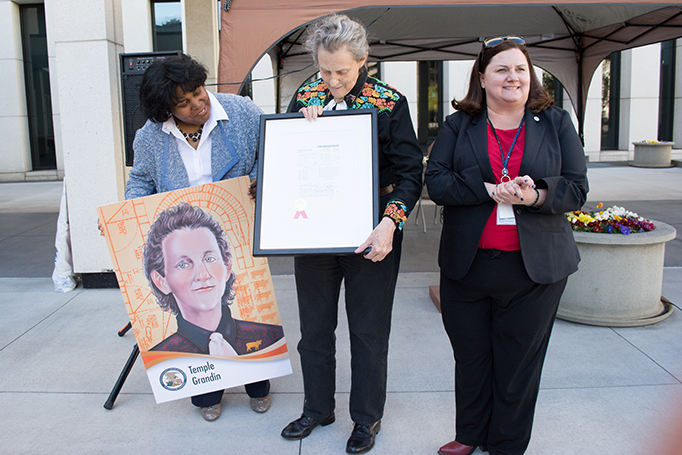
Temple Grandin is an inventor, professor, author, inspirational speaker, and an important champion for the humane treatment of livestock. A professor of animal sciences at Colorado State University and a leading advocate for the disabled community, Grandin holds a patent for farm-handling equipment, including a system that prevents animals from being hurt and help keep them calm during inoculation.
Beulah Henry was a prolific inventor with 49 U.S. patents and over 100 inventions credited to her name. She received her first patent at the age of 25 for a vacuum-sealed ice cream freezer. A successful entrepreneur, her numerous inventions included improvements to sewing machines, typewriters, cash registers, umbrellas, dolls, and toys. On April 1, the USPTO will unveil its newest Journeys of Innovation story about Beulah Henry at www.uspto.gov.
Stephanie Kwolek invented poly-paraphenylene terephtalamide, a polymer material that is five times stronger than steel, while working as one of DuPont’s first female research chemists. The material, marketed worldwide under DuPont’s Kevlar® brand, has many applications ranging from bicycle tires and racing sails to vests used by police and military personnel. During her lifetime, she was honored with the NMTI and inducted into the NIHF. Dupont had sold one million Kevlar vests by the time of her death in 2014.
Ellen Ochoa, a veteran of three NASA Space Shuttle flight missions and the first Hispanic-American woman in space, is a co-inventor on three patents: an optical inspection system, an optical object recognition method, and a method for noise removal in images. Her inventions significantly increased the ability to capture and analyze finely detailed imagery, with applications in space and on Earth.
The USPTO’s Inventor Collectible Card Series shows the many faces of U.S. patent holders—both contemporary and historic. The cards personalize inventors and invention, help tell inventors’ stories, and inspire young people to see themselves as creative problem-solvers capable of inventing their own future. Requests for USPTO trading cards can be sent to education@uspto.gov. You can also view the entire collection on the kids pages of the USPTO website.
Posted at 05:36AM Mar 30, 2022 in USPTO |
The USPTO’s Patent Pro Bono Program: Promoting equity in innovation since 2011
Blog by Drew Hirshfeld, Performing the Functions and Duties of the Under Secretary of Commerce for Intellectual Property and Director of the USPTO
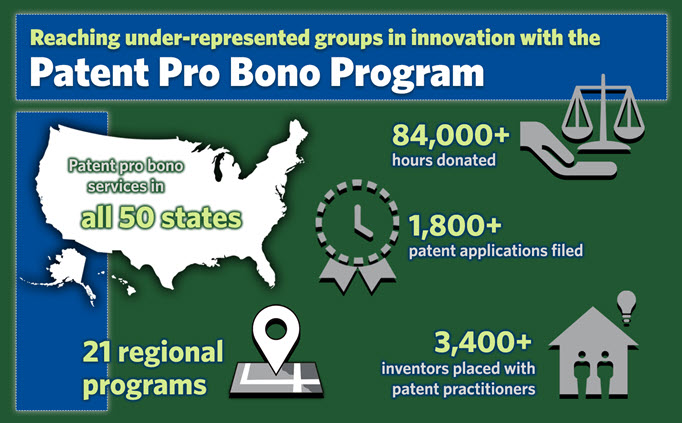
Since its launch in 2011 as part of the Leahy-Smith America Invents Act, this nationwide network of independently operated academic and nonprofit organizations (regional programs) has matched more than 3,400 under-resourced inventors and small businesses with volunteer patent practitioners, and helped them file over 1,800 patent applications. Practitioners have donated more than 84,000 hours of legal services. The PPBP is available in all 50 states, the District of Columbia, and Puerto Rico, through 21 independently operated regional programs. It has been very popular with inventors and entrepreneurs, who receive assistance in preparing and filing a patent application, and with patent professionals, who are able to give back to their communities by volunteering their services.
The goals of the PPBP align with the knowledge that our nation’s greatest strengths are our diversity and creativity. To more effectively promote the progress of science and the “useful arts,” as promised in the “Progress” or “Patent” clause in article 1, section 8, clause 8 of the U.S. Constitution, we must broaden the innovation community. All Americans should have the opportunity to patent their innovations, trademark their brands, seek investments to grow their enterprises, and engage in emerging sectors of the economy that need diverse insights and perspectives.
However, a recent USPTO study found that only 12.8% of all inventors named on U.S. patents are women. At the same time, a Harvard study revealed that white individuals are three times more likely to invent than Black individuals. The reasons for these disparities are complex, and the solutions rarely are simple. However, these imbalances have significant, measurable, and far-reaching effects on our economy.
In calendar year 2021, regional patent pro bono programs collected voluntary demographic information from applicants, and the results revealed some insightful trends. Of the applicants who responded to the survey, 30% identified as African American or Black, 1.5% identified as Native American, and 5.6% identified as either Asian, Pacific Islander, or Hawaiian Native, which are all higher than existing proportions in the U.S. population, according to the 2010 U.S. Census data. In addition, 41% self-identified as female and 14% self-identified as Hispanic. These results show that these demographic groups are using pro bono resources and programs in substantial numbers to protect their intellectual property.
To participate in the PPBP, inventors and small businesses must meet certain financial thresholds and other conditions. The eligibility criteria vary for each regional program, but in general, there are three basic requirements:
- Income: Your gross household income should be less than three times the federal poverty level guidelines (specifics may differ based on the regional program).
- Knowledge: You must demonstrate knowledge of the patent system in one of two ways: (1) have a provisional application already on file with the USPTO, or (2) successfully complete the certificate training course (certificado de formación en español).
- Invention: You must be able to describe the particular features of your invention and how it works.
To learn more about the PPBP, watch this short series of videos or this recorded webinar, and to find a program near you, visit the Patent Pro Bono page of the USPTO website.
Based on the success of the Patent Pro Bono Program, we recently launched a Trademark Trial and Appeal Board Pro Bono Program, and will very soon be launching a Patent Trial and Appeal Board Program. These programs provide free legal assistance to under-resourced inventors and businesses involved in patent and trademark proceedings before the Boards.
We are always looking to assist more small businesses and entrepreneurs by growing the PPBP. If you’re a patent practitioner who’d like to join this effort by volunteering your legal services, find your state on the Patent Pro Bono coverage map and fill out an online volunteer application form found on the program’s website. For any other questions about the program, please contact probono@uspto.gov. And we hope you explore other USPTO initiatives aimed at increasing equitable participation in the innovation ecosystem, including the Council for Inclusive Innovation (CI2) and our economic relief programs.
Posted at 05:28AM Mar 23, 2022 in USPTO |
Nominate an inventor for the National Medal of Technology and Innovation
Blog by Drew Hirshfeld, Performing the Functions and Duties of the Under Secretary of Commerce for Intellectual Property and Director of the USPTO
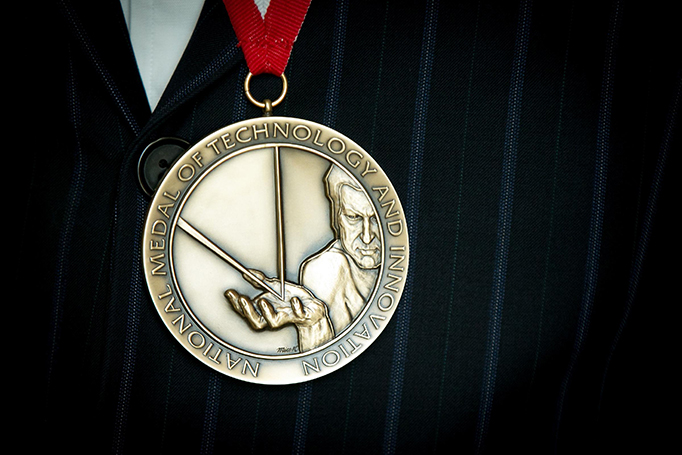 The design for the National Medal of Technology and Innovation is the work of medalist and sculptor Mico Kaufman of North Tewksbury, Massachusetts. (Photo by Jay Premack/USPTO)
The design for the National Medal of Technology and Innovation is the work of medalist and sculptor Mico Kaufman of North Tewksbury, Massachusetts. (Photo by Jay Premack/USPTO)
We live in a world shaped by innovation. From lasers, to smartphones, wireless networks, 3D printing, prosthetics, vaccines, and so much more—our lives are improved, and in some cases saved, by the efforts of scientists and inventors from across our great nation. These intrepid innovators inspire us all. They challenge us to dream and to dare, to explore the far corners of our solar system or the genetic code of human beings, to pursue a degree or a career we may not have previously considered. They remind us that everyone has within them the potential to change this world for the better. They are role models and leaders in the march of human progress, worthy of commendation for their ingenuity and global impact.
To recognize these often unsung heroes, the USPTO is currently accepting nominations for the National Medal of Technology and Innovation (NMTI), our nation’s highest honor for technological achievement.
The President of the United States awards the NMTI to individuals, teams, and companies that have made lasting contributions to America’s competitiveness, standard of living, and quality of life through technological innovation. Since the Medal’s inception in 1980, only 220 people have received this prestigious recognition. Past recipients of the NMTI, or Laureates, have included:
• Steve Jobs and Steve Wozniak, for their development of the personal computer
• Yvonne Brill, for inventing a rocket propulsion system to keep communications satellites in orbit
• James West, for co-inventing the foil electret microphone, which is used in phones, computers, and hearing aids
• Edith Flanigen, for her innovations in molecular sieves, which are used to purify petroleum, water, and countless other compounds
You can learn more about these and other NMTI Laureates on the National Science & Technology Medals Foundation’s website.
We invite nominations for the NMTI that represent the diversity and ingenuity of innovators from across the United States. If you know of a person, team, or company that has changed the technological landscape through their discoveries and achievements, you can nominate them on the NMTI page of the USPTO website through May 20.
The NMTI is a powerful symbol and incentive that encourages future generations to pursue technical careers, improve our world, and keep the United States at the forefront of global innovation. For more information on the NMTI and the award process, attend our webinar on March 9, sign up for the USPTO Awards newsletter, or contact us at nmti@uspto.gov.
Posted at 07:05AM Feb 16, 2022 in USPTO |
USPTO creates new programs to provide economic relief during the pandemic
Blog by Drew Hirshfeld, Performing the Functions and Duties of the Under Secretary of Commerce for Intellectual Property and Director of the USPTO

Similar to our Council for Inclusive Innovation (CI2) initiative, our goal with this working group is to vastly increase awareness of the benefits of patents and trademarks among aspiring innovators and creators, and to remove barriers to access for those who have historically been underrepresented in the U.S. intellectual property (IP) system. We want more people to utilize our resources to start new companies, develop new products and brands, expand their enterprises and, in some cases, create entirely new industries.
Notably, a year later, we have initiated more than a dozen projects for achieving this goal. Below we’ve highlighted just a few new and upcoming programs.
Expanding USPTO resources to wider audiences
We will soon unveil an “AccessUSPTO Pilot Program” aimed at providing IP training to new audiences through enhanced collaboration with national organizations who assist small businesses and creators not traditionally versed in IP. With this new program, we hope to reach more aspiring inventors and entrepreneurs and empower them with the tools they need to protect their ideas, creations, and brands.
Another upcoming program is the Tribal Nations Partnership, a year-long initiative to assist Native Americans, Alaska Natives, and Native Hawaiians who are interested in establishing or expanding their e-commerce presence, through monthly sessions focused on topics ranging from entrepreneurship to marketing and planning. We also are expanding our IP education programs to regions of the country that have been underrepresented in the innovation economy through strategic collaboration with Historically Black Colleges and Universities, Hispanic Serving Institutions, Tribal Colleges and Universities, and community colleges to offer training and outreach programs that seek to broaden participation in the innovation ecosystem at all levels.
Enhanced Training opportunities for filing applications
In addition, through our new Stakeholder Application Readiness Training (StART) program, which will launch as a pilot program this spring, a selected group of aspiring inventors will be able to participate in a three-day intensive training program on the application process to empower them with the tools and knowledge to successfully file a patent application. Further, the ERWG will be piloting a Customer Ambassador Program this summer to help a selected group of individual or joint inventors file on their own and avoid common mistakes throughout the application process.
New pro bono programs
The costs of preparing a patent application should never discourage those who want to protect their inventions. That’s why for many years, the regional not-for-profit organizations that make up the Patent Pro Bono Program have endeavored to match volunteer patent professionals with financially under-resourced inventors and small businesses in their regions for the purpose of securing patent protection. Based on the success of the program, not only will we be launching a new Patent Trial and Appeal Board (PTAB) pro bono program in 2022, but we will also soon be starting a new Trademark Trial and Appeal Board (TTAB) pro bono program. These programs will provide free legal assistance to financially under-resourced individuals and businesses involved in patent or trademark proceedings before the Boards. These important programs were born out of our valued collaborations with the PTAB Bar Association and the International Trademark Association (INTA), and will connect volunteer member attorneys with those eligible inventors and entrepreneurs seeking legal assistance to secure and defend their patents and trademark registrations.
For those interested in learning more about how to apply for a patent or trademark registration, we encourage you to visit our redesigned inventor and entrepreneur resources page. Additionally, we recently launched a new free services page that highlights the many intellectual property resources we provide at no cost. As always, we welcome your feedback, and invite you to join us at one of our upcoming Patent Public Advisory Committee meetings or Trademark Public Advisory Committee meetings.
Our economy thrives when we put American innovators first. We are honored to do our part to assist all those whose ideas drive our economy forward.
Posted at 08:35AM Jan 24, 2022 in USPTO | Comments[1]
USPTO’s FY 2021 Performance and Accountability Report: A clean bill of financial health
Guest blog by Jay Hoffman, Chief Financial Officer
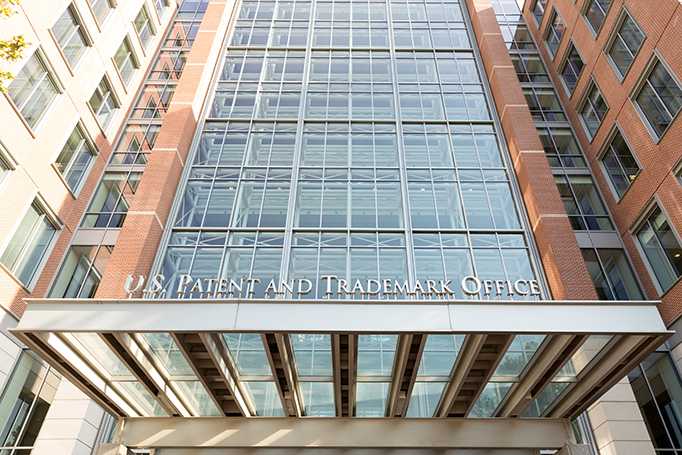 Madison building at USPTO headquarters in Alexandria, Virginia (Photo by Jay Premack/USPTO)
Madison building at USPTO headquarters in Alexandria, Virginia (Photo by Jay Premack/USPTO)
In addition to describing how the agency is responding to the administration’s directives and executive orders on certain priorities, the PAR describes our progress toward our goals of optimizing patent and trademark quality and timeliness, and providing domestic and global leadership to improve intellectual property policy, enforcement, and protection worldwide. In short, it offers our stakeholders a detailed update on how we are using our financial resources responsibly to deliver organizational excellence to all those who work with us.
Overall, the USPTO’s financial health is strong, and we continue to carefully monitor demand and revenue and work towards establishing a prudent spending and investment plan. The USPTO maintains operating reserves that enable us to consistently fund operations. We closed the year with strong and healthy balances in both our patent and trademark operating reserves, which will position us well as we look to the future.
One of our most important achievements highlighted in the FY 2021 PAR was the removal of a long-standing “significant deficiency” associated with our information technology (IT) internal security controls. This deficiency was present for the past several audit cycles and was based on the auditor’s finding that the agency could strengthen the processes, procedures and technologies that help not only ensure that those authorized had access to our IT systems, but that those systems are also properly configured to be secure in order to prevent unauthorized access. By successfully implementing a series of corrective actions over the years, the USPTO was finally able to resolve the IT deficiency first identified by the independent auditor dating back to 2015.
We recognize the trust that our stakeholders place in us every day by providing us with information related to the protection of their intellectual property. This is why USPTO continues to focus on improving the security of our financial information and our IT infrastructure to keep up with evolving risks.
This focus on security proved essential when, as recently as last month, we proactively and deliberately shut down all external access to filing systems for about 12 hours in light of a serious and time-sensitive concern related to Log4j vulnerabilities. The shutdown was necessary to perform critical maintenance to safeguard not only our infrastructure, but also the security of our filers’ data. Stakeholders were still able to file documents via email channels we created during the outage. In the new normal of continuous cyber threats, we will continue to actively monitor, prevent, and remediate cybersecurity vulnerabilities as quickly as possible to ensure the safety and security of our American intellectual property system.
While the PAR highlights our achievements, it is also a frank assessment of the challenges we face as an agency. We will continue to address those challenges, which include working to continue to provide stable and sustainable funding and investments to maintain and improve USPTO services, and ensuring IT development and operations are agile, reliable, and adaptable.
We take great pride in our long record of producing annual PARs that meet the highest standards of transparency, quality, and accountability. FY 2021 marks the 29th consecutive year that the USPTO’s financial statements have received an “unmodified” (or clean) audit opinion from an independent public accounting firm. In addition, for FY 2021, the auditors reported no material weaknesses or significant deficiencies in the design and operation of the USPTO’s system of internal controls over financial reporting, and the financial system complies with all relevant laws and regulations.
This past May, the Association of Government Accountants (AGA) also recognized the USPTO with its Certificate of Excellence in Accountability Reporting for the 19th consecutive year. The AGA awarded the USPTO its “Best in Class” honors for displaying “a prominent, clear, and concise one-page of their financial and performance highlights, including key financial measures, trends, performance measures and color-coded results.” Our team has worked hard to ensure this year’s PAR continues to deliver this standard of excellence. I am grateful to everyone who contributed to this effort.
I hope you find value in this document, and that it provides you greater insights into the USPTO’s activities and achievements.
Posted at 04:19AM Jan 11, 2022 in USPTO |
Modernizing how we issue patents and trademark registrations
Blog by Drew Hirshfeld, Performing the Functions and Duties of the Under Secretary of Commerce for Intellectual Property and Director of the USPTO

Patents
For patents, we have issued a notice of proposed rulemaking (NPRM) to seek public feedback on our proposal to revise the rules of practice to issue patents electronically. Under the current rule (37 CFR 1.315), the USPTO is required to deliver or mail a patent “upon issuance to the correspondence address of record.” Under the proposed changes, the USPTO would no longer physically deliver the patent by mailing it to the correspondence address, but would issue the patent electronically via our patent document viewing systems (i.e., Patent Center and Patent Application Image Retrieval (PAIR)). Patentees would also be able to download and print their electronically issued patents through these systems.
This change comes with many benefits for patent owners. For example, the new process will result in electronic patent issuance with the USPTO seal and the Director’s signature within one week after the patent number is assigned, reducing the pendency of every issued patent application by approximately two weeks.
The proposed changes represent another step toward the full digitization of our patent application processing and streamlining of our services. Beginning in 2001, we implemented the electronic filing system for patent applicants and have since launched numerous initiatives to provide high-quality services, including the Image File Wrapper system, the eOffice Action program, Public/Private PAIR, and Patent Center, among others.
Trademarks
While no similar amendment to the trademark rules is necessary, we still believe it is important for the public to have the chance to give us feedback about our transition to only providing digital copies of registration certificates. To that end, we recently issued a public request for comments on replacing paper registration certificates with digital versions. This change reflects a strong preference expressed to us by our trademark community. We anticipate the transition to digital delivery of trademark registration certificates to begin in the spring of 2022.
And similarly to patents, this new electronic process will benefit trademark owners by providing a more accessible and timely registration certificate – one they will be able to view, download, and print a complete copy of at their leisure. This change will also allow us to issue trademark registrations 1-2 weeks faster than our current process by discontinuing the printing, assembling, and mailing of paper registration certificates upon issuance. Since we currently issue 6,000-9,000 printed trademark registration certificates per week, this will reduce paper processing to a minimum.
Next steps
Once the transition is complete, for customers who wish to continue to receive paper “presentation copies” of issued patents and trademark registration certificates with an embossed gold seal and a Director’s signature, that option will still be available for a $25 fee per copy. On future digital formats, we plan to use a digital seal and electronic Director’s signature to officially authorize the patent or trademark.
By gathering feedback from the public regarding this transition to electronic patents and trademarks, we can fully consider all views as we continue to modernize our processes while continuing our core mission of providing the high-quality patents and trademark registrations our customers have come to expect and deserve from America’s innovation agency.
As always, we look forward to working with our stakeholders to ensure their needs are met, and that American innovation continues to drive our nation, and the world, forward.
Posted at 04:59AM Dec 10, 2021 in USPTO | Comments[39]
Apply for a judicial law clerkship at the USPTO by September 10
Guest Blog by Scott Boalick, Chief Judge of the Patent Trial and Appeal Board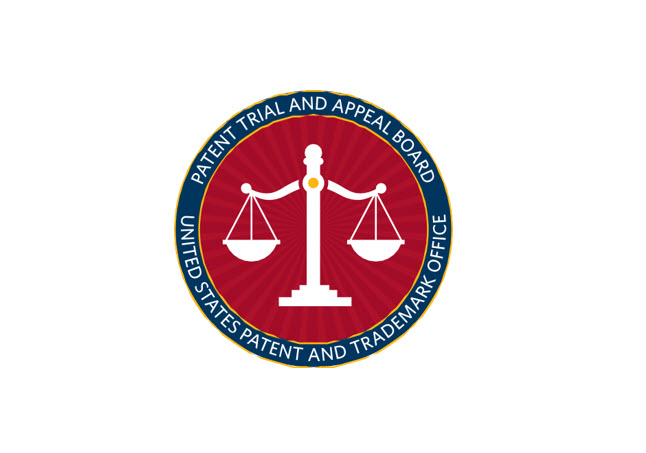
The PTAB serves two important functions in the intellectual property system. First, the PTAB reviews the work of patent examiners in ex parte appeals and determines whether an examiner’s rejection of a patent application should be sustained. Additionally, the PTAB adjudicates the patentability of issued patents in America Invents Act (AIA) trial proceedings, which serve as a cheaper, faster alternative to district court litigation. For both types of proceedings, a panel of three administrative law judges who are skilled in technology and trained in patent law hear the cases and render decisions for the Board.
As a judicial law clerk, you would work directly with judges on a variety of assignments, from researching legal issues to discussing cases with judges, for both ex parte appeals and AIA trials. Additionally, you would have the opportunity to participate in all Board training events, attend conferences, and prepare and deliver presentations. The diversity of work and training gives our judicial law clerks a broad understanding of the PTAB.
Serving as a judicial law clerk also helps you establish a network within the intellectual property community. One former law clerk commented that “[the] environment is very collaborative and welcoming. At all levels, people are willing to answer your questions. More importantly, they want to hear your perspective.”
Judicial law clerks are required to be U.S. citizens and graduates of an accredited law school prior to starting at the PTAB. Additionally, judicial law clerks must have an undergraduate degree in a technical area, such as engineering, chemistry, or biology. Admission to a state bar or the patent bar is not required, though encouraged.
If selected as a judicial law clerk, you would serve for a paid, one-year term. Typically, terms start in October and end the following September. To apply, you must submit a resume and undergraduate, graduate (if applicable), and law school transcripts through USAjobs.gov. Providing a cover letter is optional, but may help us get a better idea of what makes you a great candidate.
Perhaps best said by a recent law clerk: “If you are interested in practicing before the PTAB, the judicial clerkship program is an excellent way to develop skills and insight into the forum and set yourself apart from your peers.” For example, past law clerks have gone on to further prestigious positions in public service, including as law clerks at the U.S. Court of Appeals for the Federal Circuit.
If you meet the qualifications outlined above and are interested in the intersection of IP and the law, we hope you consider joining us at the PTAB.
Posted at 10:53AM Sep 02, 2021 in USPTO |
PTAB’s “Fast-Track” pilots available for regular and COVID-19 related ex parte appeals
Guest Blog by Scott Boalick, Chief Judge for the Patent Trial and Appeal Board

Last year, the USPTO launched the first-ever, one-year “Fast-Track Appeals Pilot Program” to offer patent appellants a way to secure expedited resolution of any ex parte appeal. We just extended the pilot program to run for another one-year period through July 2, 2022. On April 15, 2021, we also launched a specialized Fast-Track Appeals Pilot Program just for COVID-19 related inventions.
To advance an appeal under the regular Fast-Track Appeals Pilot, an appellant must meet four conditions. First, the application must be an original utility, design, or plant nonprovisional application. Second, the appeal desired for fast-track status must be pending before the Patent Trial and Appeal Board (PTAB). Third, the appellant must file a petition to request fast-track treatment. And fourth, the appellant must pay a petition fee, currently $420.
For the COVID-19 Fast-Track Appeals Pilot, the first three requirements apply but the appellant is not required to pay a petition fee. In addition, the application must claim a product or process that is subject to an applicable FDA approval for COVID-19 use.
Since the regular Fast-Track Appeals Pilot’s launch through June 30, 2021, we have granted 197 petitions, on average within two days of filing. Merits-based appeal decisions were decided in an average of 2.1 months, much quicker than our fast-track target of six months to decision, and much quicker than the approximately 13-month average time to decide appeals overall.
To date, we have not received any petitions under the COVID-19 Fast-Track Appeals Pilot. The COVID-19 Fast Track Appeals Pilot is a companion to the COVID-19 Prioritized Examination Pilot Program, and applications that are under review in the COVID-19 Prioritized Examination Pilot feed into the COVID-19 Fast-Track Appeals Pilot. The COVID-19 examination pilot started a little more than one-year ago, and therefore applications under the COVID-19 examination pilot are only now approaching a second or final rejection, placing them in position for appeal.
In order to ensure that there is no adverse impact to appeal processing overall caused by the expedited turnarounds offered in the regular Fast-Track and COVID-19 Fast-Track pilots, size limitations have been placed on both pilot programs. Information on these limitations can be found on the Fast-Track Appeals Pilot and the COVID-19 Fast-Track Appeals Pilot pages of the USPTO website.
We remain committed to monitoring and evaluating the effects of both the regular Fast-Track Appeals Pilot Program and the COVID-19 Fast-Track Appeals Pilot Program. If you have any questions or comments about these programs, please email or fasttrackappeals@uspto.gov or COVIDfasttrackappeals@uspto.gov, respectively. Also, the webpages for the regular Fast-Track Appeals Pilot and the COVID-19 Fast-Track Appeals Pilot are replete with information, including current filing data and open slots for each program.
Posted at 06:49AM Aug 04, 2021 in USPTO |
Spotlight on Commerce: Hannah Wang, Primary Patent Examiner
Guest blog post by Hannah Wang, Primary Patent Examiner, U.S. Patent and Trademark Office (USPTO)
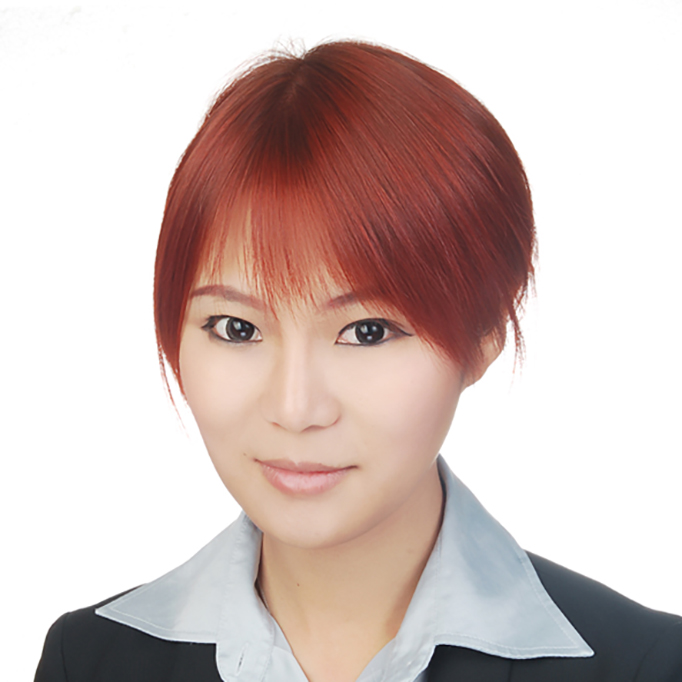
As a primary patent examiner at the Commerce Department's United States Patent and Trademark Office (USPTO), I handle patent applications in the area of computer networking. In addition, I have the privilege of currently serving as president of the Asian Pacific American Network (APANET), one of the largest affinity groups across the federal government. I also recently became a co-host of our workgroup’s Quality Enhancement Meetings (QEM). These QEMs provide patent examiners with the opportunity to learn about various topics and bring up any questions related to patent examining.
During my undergraduate studies in China, I pursued a major in Electrical Engineering, focusing on circuits and signal processing. In 2007, I moved to the United States to pursue my master’s degree at George Washington University, focusing on communication networks. Afterward, I attended Cornell University and earned a master’s degree in engineering management. At the time, I wanted to prepare myself for a career in consulting. However, life always has a way of surprising you. I happened to take a job as a patent analyst at a patent firm. That job opened my eyes to the patent field and changed my career path. I discovered my passion for a field that perfectly integrated my engineering expertise with innovation and law. When the opportunity arose, I decided to join the USPTO in 2016 to further pursue this passion. Today I am proud to be part of an amazing agency that serves as the backbone of American innovation.
Asian American and Native Hawaiian/Pacific Islander (AANHPI) Heritage Month is a perfect time to reflect on how far the AANHPI community has come and to celebrate the AANHPI community’s integral role in our Nation’s accomplishments and developments. During this month, we are not only reminded of the sacrifices and hardships experienced by past generations, but also to cherish the valuable equality and opportunities we have today. These reflections motivate us to continue working diligently and to provide an even better foundation for future generations. As a first-generation immigrant, it is very special to have my culture recognized, shared, and celebrated with so many people across the Commerce Department and the country. During this Covid-19 pandemic, it is especially important to raise awareness, promote diversity, and offer support to our AANHPI community.
The strength of the USPTO’s AANHPI community is reflected in the growth of APANET throughout the years. I am extremely proud that APANET has grown from 10 members when it was created to more than 800 members today. APANET hosts annual events every year for our members and USPTO employees. Events include our Lunar New Year celebration, AANHPI Heritage Month celebration, dragon boat races, and Diwali celebration, to name a few. Serving as the president of APANET provides me with many opportunities to collaborate with colleagues and coordinate events outside of patent examining. I am truly grateful that I can grow with APANET, provide help and services to others, and learn how to become an effective leader.
As a career civil servant at the USPTO, my job helps foster an environment that creates economic growth and opportunity. I can’t think of anything more impactful than protecting and expanding innovation in the U.S. through intellectual property. It helps create new jobs for Americans and advance our nation. My advice for those interested in a federal career is to not be afraid of exploring new things and changing original plans. As we explore, we discover new interests and develop new skills. Although this can mean deviating from our original plan, it can also lead to an even more suitable career path. The federal government offers a variety of opportunities that are a good fit for talented and hard-working individuals. Being willing to explore these opportunities will help you find your passions, talents, and a successful career path.
Ed. note: This post is part of the Spotlight on Commerce series highlighting the contributions of Department of Commerce employees during Asian American and Native Hawaiian/Pacific Islander Heritage Month.
Posted at 10:28AM May 20, 2021 in USPTO | Comments[2]
USPTO concludes successful Women’s Entrepreneurship Symposium
A blog about the USPTO from the U.S. Department of Commerce.
The USPTO hosted the final installment of the 2021 Women’s Entrepreneurship Symposium (WES) on March 31, where participants heard from a diverse panel of successful women innovators who shared their stories of entrepreneurship and the challenges they faced along the way.
WES, an annual event launched in 2011, has proven to be one of the USPTO’s most popular programs to date. Over 6,000 attendees tuned in this year to hear lessons learned, helpful tips, and resources for women entrepreneurs to protect the various forms of intellectual property (IP) which might be present in their businesses - namely patents, trademarks, copyrights, and trade secrets.
The speakers at the March 31 session described how they got to where they are, and what they recommend for all the aspiring young women in our country. They also addressed the vital role of IP protection, how to identify a market segment for growth, and discussed best practices and successful habits in today’s changing business climate.
Panelists included Janeya Griffin, Founder and CEO, The Commercializer; Rea Huntley, Founder and CEO, Lavii INC; and Sarah Gibson Tuttle, Founder and CEO, Oliver and June. Dr. Lisa Cook, Professor at Michigan State University, and Edison Research Fellow at the USPTO, moderated the panel.
Throughout the month of March, WES offered engaging, expert panels featuring successful women entrepreneurs, notable inventors, and subject matter experts from the USPTO, the International Trade Administration and the Small Business Administration.
In addition, the discussions focused on important topics such as expanding opportunities for women and underrepresented groups in innovation, increasing educational opportunities for girls and women in invention and STEM, and highlighting the role women entrepreneurs play in innovation and economic growth.
View the playlist of all WES sessions on the USPTO’s YouTube page and browse all upcoming USPTO events.
Posted at 10:02AM Apr 01, 2021 in USPTO | Comments[1]

